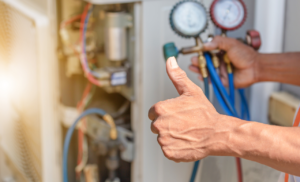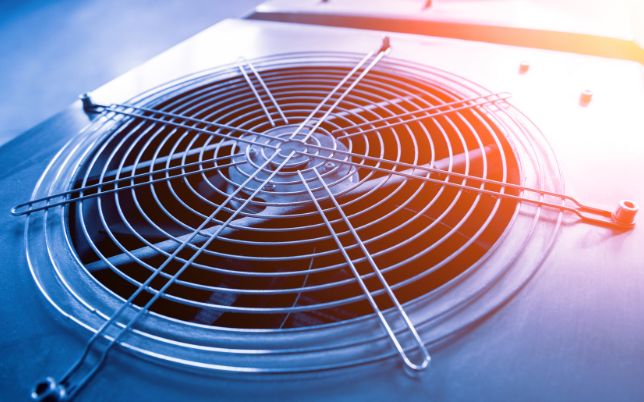The Middle East is a region characterized by extreme temperatures, where reliable and efficient HVAC (Heating, Ventilation, and Air Conditioning) systems are essential for maintaining comfortable indoor environments. However, operating HVAC systems efficiently in such a climate poses significant challenges. With energy consumption in the region being among the highest globally, optimizing HVAC operation is not only a matter of comfort but also of sustainability and cost-effectiveness. This article explores key strategies to enhance the efficiency of HVAC systems in the Middle East, focusing on advanced technologies, maintenance practices, and sustainable approaches.

Understanding the Challenges
In the Middle East, HVAC systems account for a substantial portion of energy consumption, particularly during the scorching summer months. The high demand for cooling, combined with the region’s reliance on fossil fuels, results in significant environmental impacts and high operational costs. The unique climatic conditions, characterized by high temperatures and humidity levels, exacerbate these challenges, making it imperative for businesses and building owners to optimize their HVAC operations.
Utilizing HVAC Technologies
The adoption of advanced HVAC technologies is crucial for optimizing system performance in the Middle East. Modern HVAC systems are designed to be more energy-efficient and environmentally friendly, making them ideal for the region’s demanding climate.
Pressure Independent Control Valves (PICV): PICVs are critical for maintaining consistent flow rates in HVAC systems, regardless of pressure fluctuations. By ensuring that each component of the system receives the optimal flow, PICVs enhance energy efficiency and system performance, particularly in large or complex installations.
Energy Valves: Energy valves integrate flow control and energy monitoring into a single device, providing real-time data on energy consumption. These valves allow for precise control over heating and cooling output, helping to optimize energy use and reduce operational costs.
Variable Frequency Drives (VFDs): VFDs control the speed of HVAC motors, adjusting the output based on demand. By reducing motor speed during low-demand periods, VFDs can significantly cut energy consumption and extend the life of HVAC components.
Importance of Regular Maintenance
Regular maintenance is vital for ensuring the longevity and efficiency of HVAC systems, particularly in the harsh conditions of the Middle East.
Routine Inspections and Cleaning: Dust and debris can accumulate in HVAC components, leading to reduced efficiency and increased energy consumption. Regular inspections and cleaning of filters, coils, and ducts help maintain optimal airflow and system performance.
Refrigerant Management: Proper management of refrigerants is essential to avoid leaks that can decrease system efficiency and harm the environment. Ensuring the correct refrigerant charge and addressing leaks promptly can significantly improve HVAC performance.
Scheduled Tune-Ups: Regular tune-ups by certified technicians can help identify potential issues before they become costly problems. This includes checking the system’s electrical connections, calibrating thermostats, and ensuring the proper functioning of all components.

Embracing Sustainable Practices
Sustainability is becoming increasingly important in the Middle East, driven by both environmental concerns and government regulations aimed at reducing carbon emissions.
Utilizing Renewable Energy Sources: Integrating renewable energy sources, such as solar power, with HVAC systems can significantly reduce reliance on fossil fuels. Solar-assisted HVAC systems are particularly effective in the Middle East, where sunlight is abundant throughout the year.
Implementing Energy-Efficient Building Designs: Energy-efficient building designs can greatly reduce the cooling load on HVAC systems. Features such as reflective roofing, high-quality insulation, and energy-efficient windows help minimize heat gain, allowing HVAC systems to operate more efficiently.
Green Building Certifications: Pursuing green building certifications, such as LEED (Leadership in Energy and Environmental Design), can drive the adoption of sustainable HVAC practices. These certifications encourage the use of energy-efficient technologies and designs, ultimately leading to reduced energy consumption and environmental impact.
Leveraging Data and Analytics
Data and analytics play a crucial role in optimizing HVAC operations. By leveraging data, businesses can gain insights into system performance and identify areas for improvement.
Predictive Maintenance: Using data from HVAC systems, predictive maintenance can identify potential issues before they cause system failures. This proactive approach minimizes downtime and ensures that the system operates at peak efficiency.
Energy Consumption Monitoring: Monitoring energy consumption in real-time allows businesses to identify inefficiencies and take corrective actions. Advanced analytics can help pinpoint areas where energy is being wasted and suggest adjustments to improve efficiency.
Occupancy-Based Controls: Data-driven occupancy-based controls adjust HVAC operations based on the number of occupants in a building. This ensures that energy is not wasted on cooling unoccupied spaces, leading to significant energy savings.
Optimizing HVAC Operations with BMS Controls
Building Management Systems (BMS) play a pivotal role in the optimization of HVAC operations in the Middle East. BMS controls integrate various components of an HVAC system, such as PICVs, energy valves, and VFDs, into a cohesive platform that enables precise control and monitoring.
Centralized Control: BMS allows for centralized control of HVAC systems, enabling operators to manage settings across multiple zones or even entire buildings from a single interface. This improves operational efficiency and makes it easier to implement energy-saving measures.
Real-Time Adjustments: With real-time data from PICVs, energy valves, and VFDs, BMS can make instantaneous adjustments to HVAC operations based on changing conditions. For example, if a particular area of a building becomes unoccupied, the BMS can reduce cooling output to that zone, saving energy.
AI Optimization: Advanced BMS platforms use Artificial Intelligence in order to optimize algorithms and continuously analyze system performance and suggest improvements. These algorithms can optimize energy usage, reduce wear and tear on equipment, and enhance overall system efficiency.
The Role of IoT Technology in HVAC Optimization
The Internet of Things (IoT) is revolutionizing HVAC operations by enabling more connected, intelligent, and responsive systems. IoT technology allows for the integration of various HVAC components into a unified network, offering numerous benefits for performance optimization.
Remote Monitoring and Control: IoT-enabled HVAC systems can be monitored and controlled remotely, providing facility managers with real-time access to system data and control capabilities from anywhere. This allows for quick responses to system issues, reducing downtime and ensuring continuous optimal performance.
Predictive Maintenance with IoT Sensors: IoT sensors can be placed throughout HVAC systems to collect data on temperature, humidity, pressure, and other critical parameters. This data is analyzed in real-time to predict when maintenance is needed, allowing for proactive repairs that prevent system failures and reduce maintenance costs.
Energy Efficiency through IoT Integration: IoT devices can optimize energy use by adjusting HVAC operations based on real-time data. For example, IoT sensors can detect when a room is empty and automatically adjust the temperature or turn off the system, reducing energy consumption without compromising comfort.
Enhanced Indoor Air Quality (IAQ): IoT technology can also help monitor and improve indoor air quality. Sensors can track pollutants, CO2 levels, and humidity, and the system can automatically adjust ventilation rates to maintain healthy IAQ, especially in regions like the Middle East where dust and pollution are common.
Data-Driven Decision Making: The vast amount of data generated by IoT-enabled HVAC systems provides valuable insights into system performance and energy usage patterns. Facility managers can use this data to make informed decisions about system upgrades, retrofits, and energy-saving strategies, leading to long-term operational efficiency.
Embracing Sustainable Practices
Sustainability is becoming increasingly important in the Middle East, driven by both environmental concerns and government regulations aimed at reducing carbon emissions.
Utilizing Renewable Energy Sources: Integrating renewable energy sources, such as solar power, with HVAC systems can significantly reduce reliance on fossil fuels. Solar-assisted HVAC systems are particularly effective in the Middle East, where sunlight is abundant throughout the year.
Implementing Energy-Efficient Building Designs: Energy-efficient building designs can greatly reduce the cooling load on HVAC systems. Features such as reflective roofing, high-quality insulation, and energy-efficient windows help minimize heat gain, allowing HVAC systems to operate more efficiently.
Green Building Certifications: Pursuing green building certifications, such as LEED (Leadership in Energy and Environmental Design), can drive the adoption of sustainable HVAC practices. These certifications encourage the use of energy-efficient technologies and designs, ultimately leading to reduced energy consumption and environmental impact.
Leveraging Data and Analytics
Data and analytics play a crucial role in optimizing HVAC operations. By leveraging data, businesses can gain insights into system performance and identify areas for improvement.
Predictive Maintenance: Using data from HVAC systems, predictive maintenance can identify potential issues before they cause system failures. This proactive approach minimizes downtime and ensures that the system operates at peak efficiency.
Energy Consumption Monitoring: Monitoring energy consumption in real-time allows businesses to identify inefficiencies and take corrective actions. Advanced analytics can help pinpoint areas where energy is being wasted and suggest adjustments to improve efficiency.
Occupancy-Based Controls: Data-driven occupancy-based controls adjust HVAC operations based on the number of occupants in a building. This ensures that energy is not wasted on cooling unoccupied spaces, leading to significant energy savings.
Optimizing HVAC Operations with BMS Controls
Building Management Systems (BMS) play a pivotal role in the optimization of HVAC operations in the Middle East. BMS controls integrate various components of an HVAC system, such as PICVs, energy valves, and VFDs, into a cohesive platform that enables precise control and monitoring.
Centralized Control: BMS allows for centralized control of HVAC systems, enabling operators to manage settings across multiple zones or even entire buildings from a single interface. This improves operational efficiency and makes it easier to implement energy-saving measures.
Real-Time Adjustments: With real-time data from PICVs, energy valves, and VFDs, BMS can make instantaneous adjustments to HVAC operations based on changing conditions. For example, if a particular area of a building becomes unoccupied, the BMS can reduce cooling output to that zone, saving energy.
AI Optimization: Advanced BMS platforms use Artificial Intelligence in order to optimize algorithms and continuously analyze system performance and suggest improvements. These algorithms can optimize energy usage, reduce wear and tear on equipment, and enhance overall system efficiency.
The Role of IoT Technology in HVAC Optimization
The Internet of Things (IoT) is revolutionizing HVAC operations by enabling more connected, intelligent, and responsive systems. IoT technology allows for the integration of various HVAC components into a unified network, offering numerous benefits for performance optimization.
Remote Monitoring and Control: IoT-enabled HVAC systems can be monitored and controlled remotely, providing facility managers with real-time access to system data and control capabilities from anywhere. This allows for quick responses to system issues, reducing downtime and ensuring continuous optimal performance.
Predictive Maintenance with IoT Sensors: IoT sensors can be placed throughout HVAC systems to collect data on temperature, humidity, pressure, and other critical parameters. This data is analyzed in real-time to predict when maintenance is needed, allowing for proactive repairs that prevent system failures and reduce maintenance costs.
Energy Efficiency through IoT Integration: IoT devices can optimize energy use by adjusting HVAC operations based on real-time data. For example, IoT sensors can detect when a room is empty and automatically adjust the temperature or turn off the system, reducing energy consumption without compromising comfort.
Enhanced Indoor Air Quality (IAQ): IoT technology can also help monitor and improve indoor air quality. Sensors can track pollutants, CO2 levels, and humidity, and the system can automatically adjust ventilation rates to maintain healthy IAQ, especially in regions like the Middle East where dust and pollution are common.
Data-Driven Decision Making: The vast amount of data generated by IoT-enabled HVAC systems provides valuable insights into system performance and energy usage patterns. Facility managers can use this data to make informed decisions about system upgrades, retrofits, and energy-saving strategies, leading to long-term operational efficiency.

Conclusion
Optimizing HVAC operation in the Middle East is essential for reducing energy consumption, lowering operational costs, and minimizing environmental impact. By embracing advanced technologies such as PICVs, energy valves, VFDs, BMS controls, and IoT solutions, prioritizing regular maintenance, adopting sustainable practices, leveraging data and analytics, businesses and building owners can achieve significant improvements in HVAC efficiency. As the region continues to grow and urbanize, the importance of efficient HVAC systems will only increase, making it imperative to prioritize optimization strategies today.


Great article! I appreciate the clear and insightful perspective you’ve shared. It’s fascinating to see how this topic is developing. For those interested in diving deeper, I found an excellent resource that expands on these ideas: check it out here. Looking forward to hearing others’ thoughts and continuing the discussion!